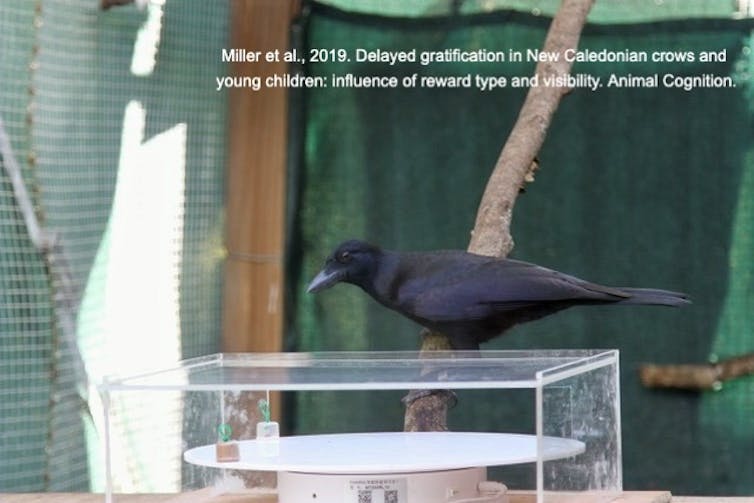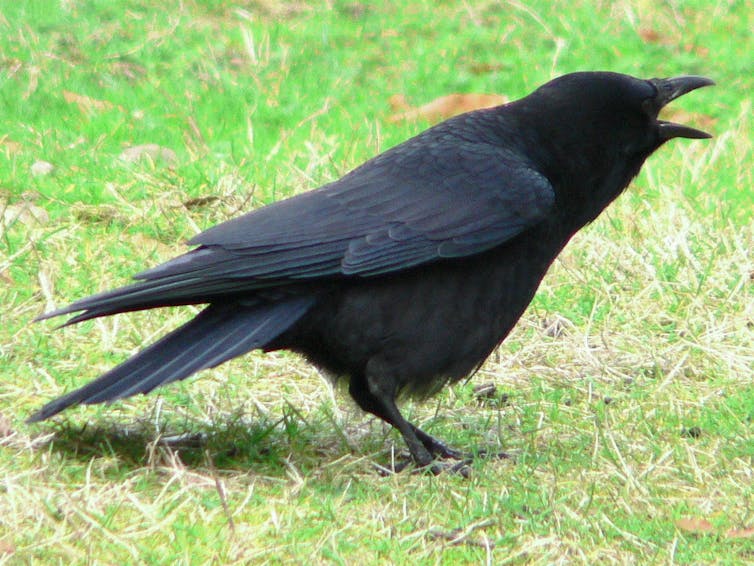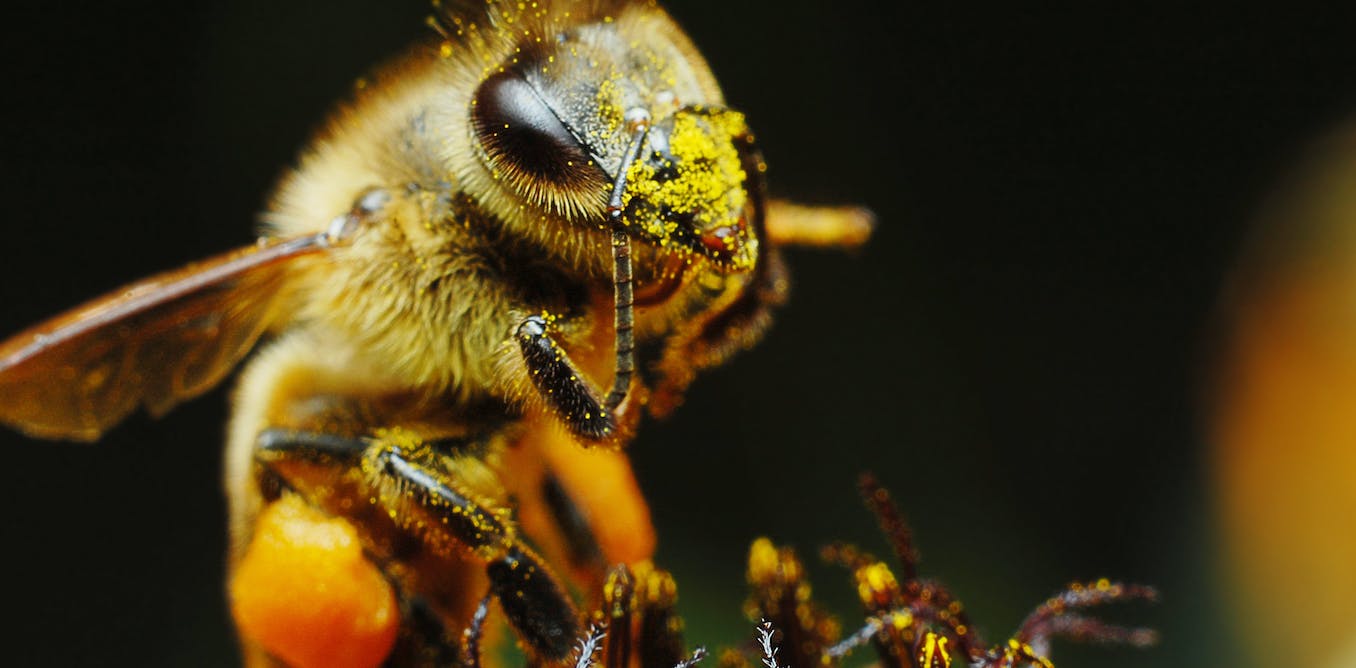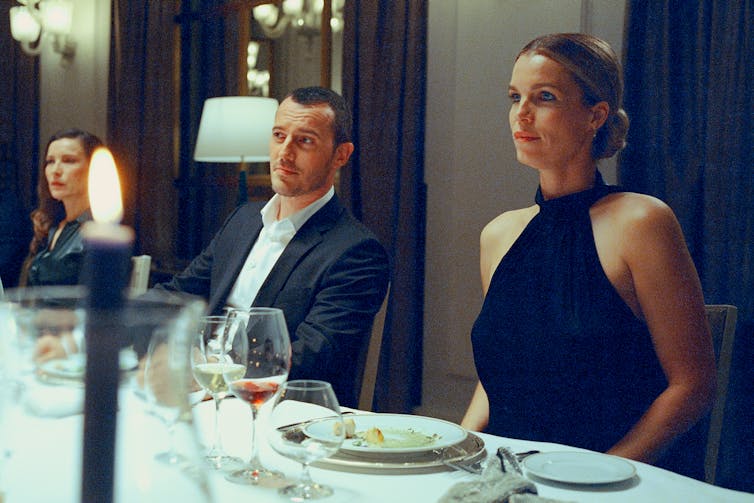It’s no secret corvids are endowed with remarkable cognitive abilities.
Internet is awash with videos of crows imitating voices or solving complex brainteasers. But are these birds as intelligent as they are made out to be?
The nutcracker puzzle
One of the most quoted studies to back up the thesis of a superior intelligence in corvids is that of crows using cars as nutcrackers. In 1978, researchers in California noted that American crows would throw nuts on the road, wait for a car to crush them and then feast on the shattered fruit.
Despite being widely circulated by the media and even by other scientists, the study is a textbook example of how studying animal behaviour can lead us, often unintentionally, to anthropomorphise – i.e., assign animals abilities or thoughts similar to humans’, when their behaviour is actually explained by different processes.
Walter Siegmund/Wikimedia, CC BY
In 1997, researchers at the University of California took a closer look at the crows’ behaviour to check whether they did indeed use cars as nutcrackers. They hypothesised that if crows really understood that cars could pry nuts open, then the animals would place their nuts on the road and not remove them when a car approached.
However, the academics found that the crows did not throw their nuts onto the road when a car was approaching any more than when the road was empty. What’s more, out of the 200 cases studied, the researchers never saw a car crush a nut. This showed that the theory that crows were consciously using cars as nutcrackers was in fact false: crows drop their nuts on hard surfaces to crack them (such as roads) and a car sometimes crushes one. This is a happy coincidence for the crow, which does not, however, make the connection between the car and its meal.
Proven cognitive abilities
More recent research that was carried out with methods specifically designed to limit anthropomorphism is restoring corvids’ reputation for smarts. For example, it was long thought that only primates knew how to use tools. But since the 2000s, a host of studies has shown that several other species are capable of reproducing this feat, including dolphins, octopuses, corvids (crows included) and even pigs.
Corvids also appear to be highly sophisticated tool wielders thanks to their ability to choose and even manufacture tools of the right length and diameter for the task they want to accomplish, such as twigs. For example, New Caledonian Crows have a track record of producing hooks by bending materials.
They also have an impressive memory for faces. Researchers at the University of Washington, Seattle, tested this ability by donning a mask to capture and then release American crows. Wild birds would go on to aggressively scream every time they saw the masks, more than two years after they were caught. Even crows that had not been captured learned to recognise and avoid this threatening figure by observing the behaviour of their companions. This study is the first to show that wild, non-domesticated animals can recognise a human by their face and can remember it for several years, passing on this information to their fellow animals. The extent of this recognition is quite remarkable, both in temporal and social terms.
Master Raven and self-control
In another experiment, Rachael Miller and her colleagues at the University of Cambridge compared the self-control of Caledonian crows with that of children aged 3 to 5. Self-control is what enables us, for example, to reason with ourselves when we want to watch the last episode of a series so as not to be tired the next day. It’s an aspect of executive control, which enables us to make good decisions and plan for the future. Adults are generally able to use self-control without too much difficulty, but children only start to develop this ability between the ages of 3 and 5.
The experiment tested a specific aspect of self-control: delayed gratification, which occurs when you have to choose between a mediocre but immediate reward and a much better reward that is not immediately available. A typical example of delayed gratification is the marshmallow experiment.

Rachael Miller, Author provided (no reuse)
In Miller’s experiment, children and crows were presented with a slowly spinning tray containing two rewards (different stickers for the children, and sweets for the crows): one of the two rewards was more interesting to the subject, either because it was bigger or because it was of better quality. As it rotated, the tray made the less valuable reward accessible to the subjects, who could then grab it. If they succumbed, the tray then stopped spinning. However, if they waited for the first reward to pass, then the second, much more interesting one, became accessible to them.
The experiment included two tests: one in which the two rewards were visible all the time, and another where they only came into view when the tray started to spin. In the second trickier test, the second most coveted reward was not visible while the first passed in front of the subjects, who then had to use their memory on top of self-control. In the first test, both the crows and the children were able to wait for the best reward. But in the second one, the children outperformed the crows, because the latter were unable to wait for a reward they could no longer see.
In fact, this experiment is one of the few that has attempted to directly compare animals and children in terms of cognitive ability, using the same task for both species. Such results are therefore very interesting and give us a better perspective on the intelligence of crows.
However, we must bear in mind that animals are often tested on abilities that we, as humans, find important and in which we excel. Our biased view of the abilities of other species leads us to believe that we are the most intelligent creatures on Earth. But if crows were to test us in areas where they are highly intelligent, such as visual memory, navigation in 3D space or perception of the Earth’s magnetic field, would we be able to compete?




